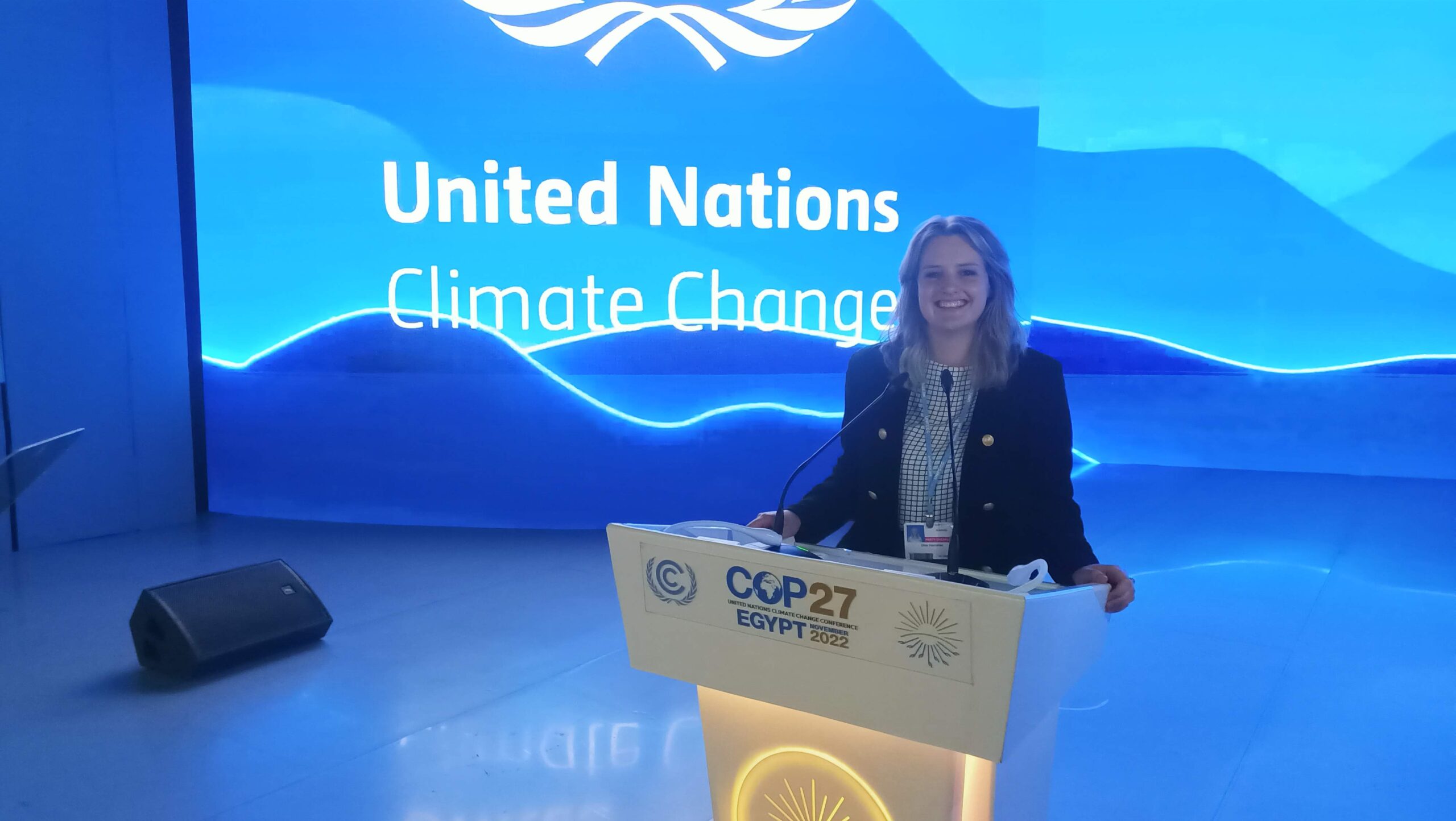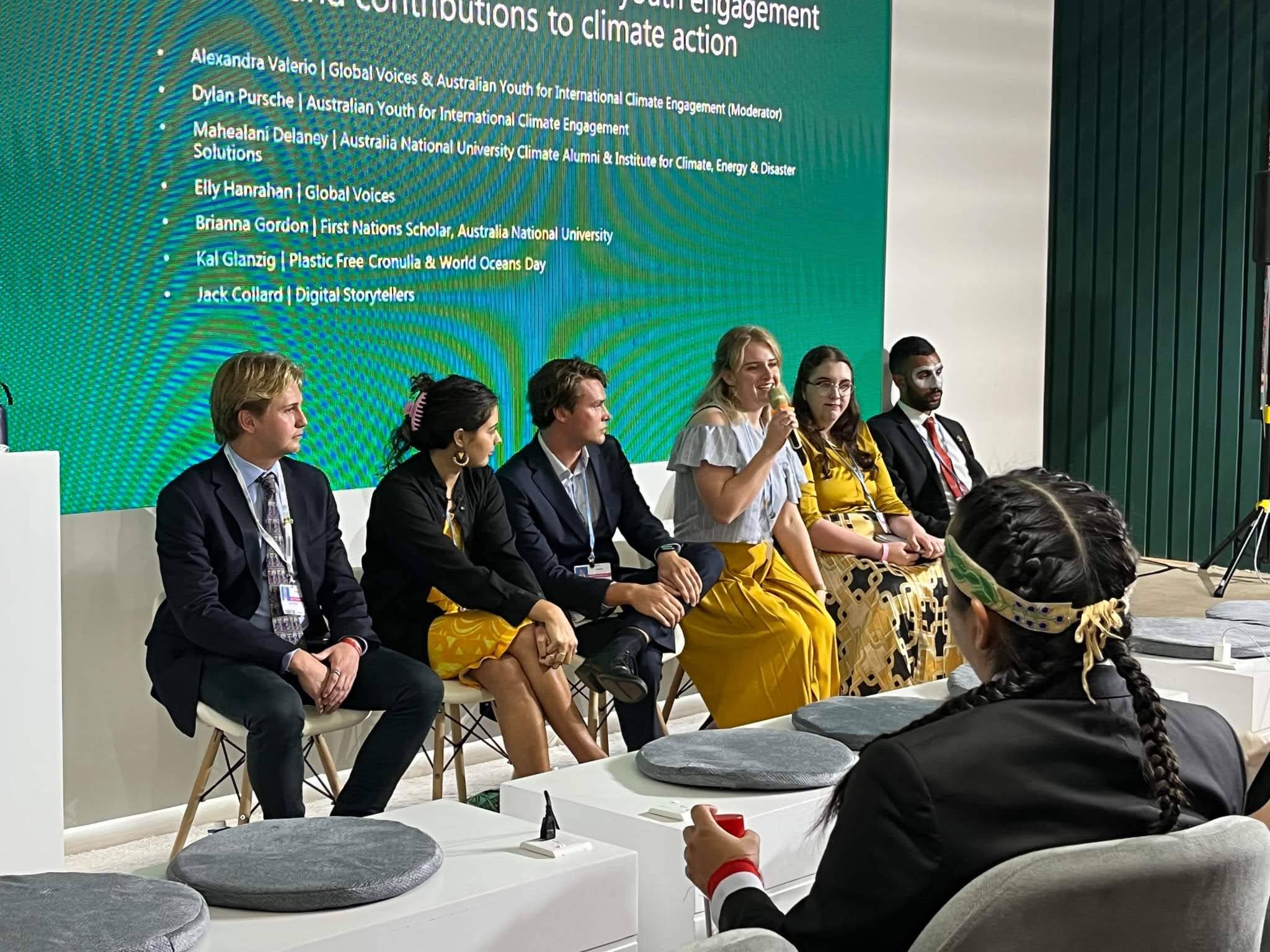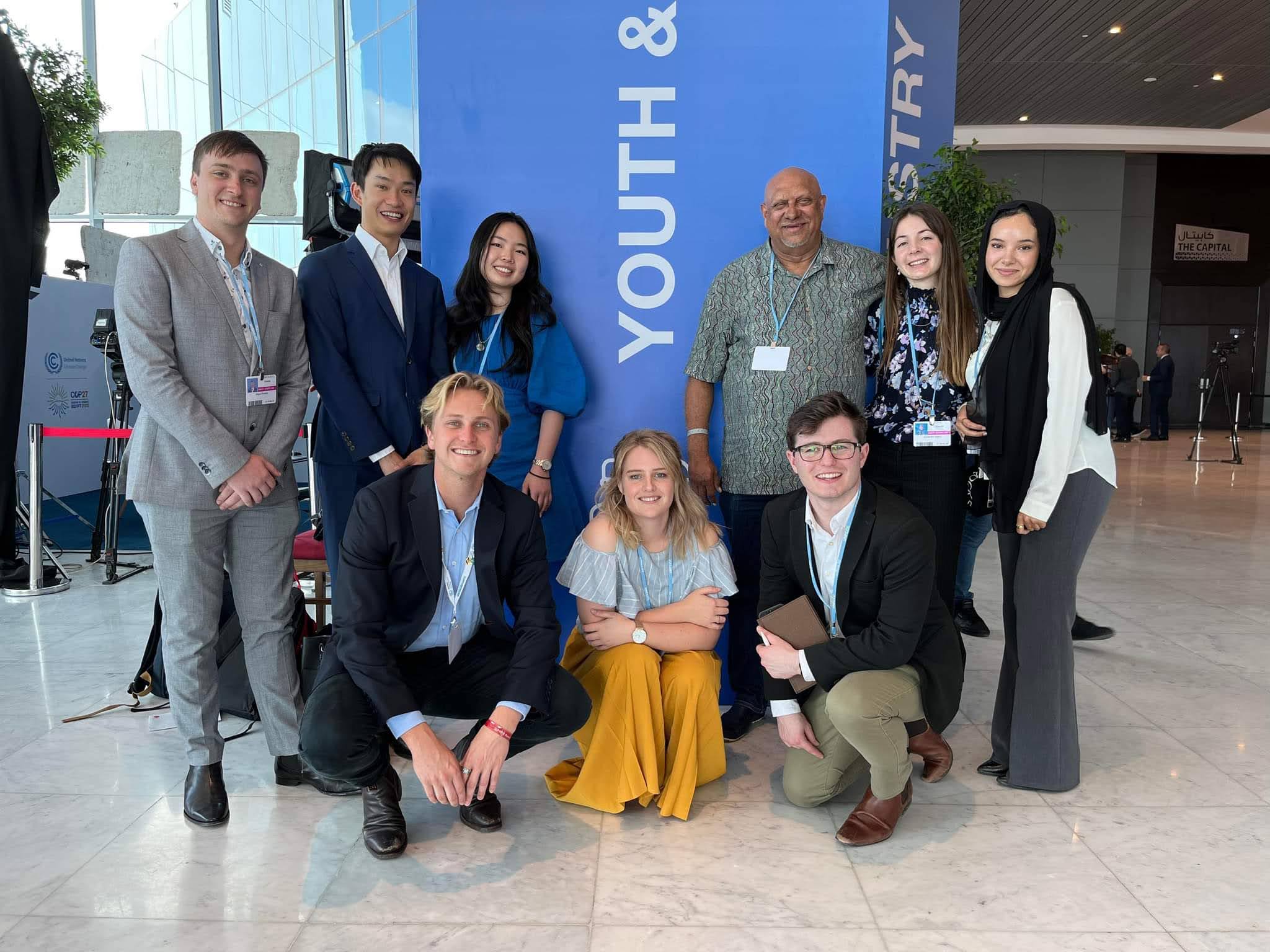
Elly Hanrahan
My first involvement in a United Nations Conference of Parties (COP) was in Paris, 2015. At 21 years old I was a youth activist at the Youth Conference (COY11); a collection of passionate young people with a mission to limit the warming of our planet to 1.5 degrees. Our mission was seemingly a success; the grownups conceded to include ‘…preferably 1.5 degrees Celsius, compared to pre-industrial levels’ into The Paris Agreement text.
I walked away from the conference confident that world leaders would now pull the levers, available to only them, to see this mission through.
Fast forward six years and disastrous climate change is already here; I’ve seen it, breathed it, and been covered in it. At 27 years old, I re-entered the halls of the COP27 conference centre, but this time with an advanced science degree and five years’ experience as a forest firefighter.
This year’s conference was held in the shadow of a global energy crisis which seemingly stalled an anticipated agreement on a ‘phase out’ of fossil fuels. Instead, the term ‘trade-off’ was tossed around casually by negotiators and decision makers at the COP27 in Egypt. How much are we comfortable sacrificing for the pursuit of profits and economic growth? How many hectares of how many forests? How much of the ice sheet? How much fertile arable land?
It is easy to talk about trade-offs when the consequences seem so theoretical, like an abstract concept somewhere way off in the distance. For me, the trade-offs are my every day. My colleagues and I have been, and will continue to be, the first people called to deal with the consequences defined by high level decision makers. They are the people who willingly head straight toward the very thing everyone else is fleeing from. Are their lives the trade-offs we’re willing to make? Is mine?
It is not hard to see that our ecosystems are crumbling around us. As firefighters, we’ve been called to respond to ‘unprecedented’ fires, ‘unprecedented’ storms, ‘unprecedented’ floods. At 1.1 degrees above global average temperatures, we are apparently existing at a ‘tolerable’ level of warming, so what will 1.5 degrees bring? The economic, social, and environmental costs of inaction are already staggering. In Pakistan, the floods have displaced 32 million people with an estimated economic cost of $40b.
This year, the COP27 was marketed as the ‘implementation’ COP, but precious time was instead dedicated to debating the 1.5-degree wording which my young cohort so desperately fought for in 2015. Even more alarming was that this debate was held after the UNEP report released this year stated there is ‘no credible pathway to 1.5”. The report highlighted that drastic, structural changes to our societies need to take place if we are to ensure a liveable planet for future generations.
After all the hype, colour and conference pin collecting, the interesting conversations, new friends, and celebratory drinks, I’ve been left a little… shell shocked. We aren’t any closer to phasing out fossil fuels, there is still a giant, well-known loophole in Article 6, the Green Climate Fund runs dry, and mechanisms to protect and enhance our natural lifesaving systems are left out of the text altogether. The will of 636 fossil fuel lobbyists clearly outweighed the 44,474 other attendees who worked to plead with their governments to aim higher on climate action.
What is the ‘correct’ reaction to seeing leaders give up on mitigation, move straight to adaptation and begin to fight over who pays who for the destruction of our beautiful, shared planet? What is a normal emotion to have when contemplating the dollar value that’s been put on future generations sweltering through heatwaves, being swept away in an onslaught of floodwaters, and fighting over limited food and water resources?
Personally, I admit I dabbled in a bit of ‘despair,’ played checkers with ‘outrage’ for a while, and went on a slightly melodramatic waltz with ‘helplessness’. Thankfully, I have finally landed on ‘determination’.
It’s obvious that to make a realistic course alteration, we need to broaden our scope and acknowledge that limiting emissions and flawed carbon markets alone will not be enough. We need holistic, large-scale, multifaceted solutions which will stabilise our micro-climates to allow us to withstand the climate extremes already locked in. At COP27, one of the main sources of hope were the side events focussed on realistic solutions through indigenous-led, Nature Based Solutions. There is a huge push to harness solutions which ensure positive outcomes for food security, health, and biodiversity; especially from indigenous community members.
A national rehydration strategy would allow public and private land managers to work alongside traditional owners and environmental stakeholders to implement one of the only methodologies certified as sustainable by the United Nations. Simple techniques anchored in traditional knowledge, focussing on the long-term sustainable management of water and reinstating the natural water cycle have the potential to reverse the damage already done in our landscapes. The implementation of landscape rehydration projects would have the two pronged effect of carrying our landscapes through the drought times as well as ensuring they will have the capacity to process water effectively; minimising erosion and flooding in the wet cycles.
We already have the knowledge and the methods needed to be able to do this; all we need now is a strategy. So stay tuned for the National Rehydration Strategy policy proposal which will be published by yours truly in the Global Voices journal coming soon.